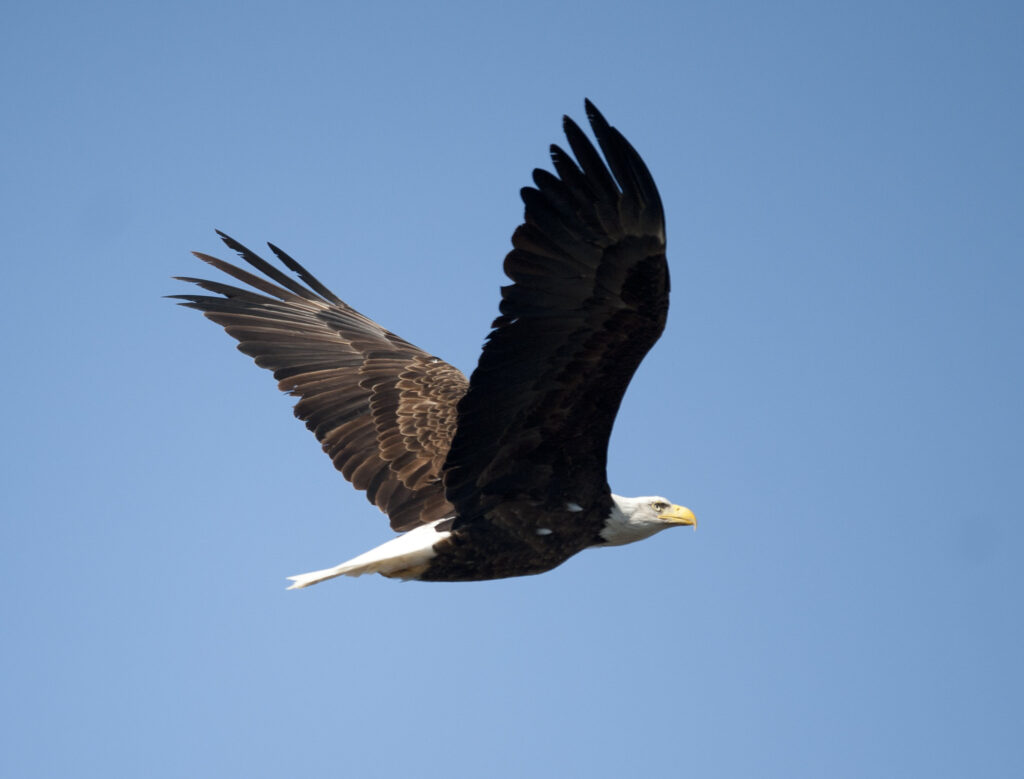
The bald eagle is the national bird of the United States. It was once a common sight over much of the continent but was severely affected in the mid-20th century by a variety of factors, particularly the use of the pesticide DDT, which caused thinning of its eggshells and sterility. In the 18th century, the bald eagle population was 300,000 – 500,000. By the 1950s, there were only 412 nesting pairs in the 48 contiguous states.
The bald eagle was declared an endangered species in the US in 1967 and additional regulations strengthened protections for the bird. The banning of DDT in 1972 was a major factor in the recovery of the species.
Bald eagle populations have been rebounding for decades but another issue is weakening that rebound – lead poisoning from gunshot ammunition. According to a new study published in the Journal of Wildlife Management, poisoning from eating dead carcasses or parts contaminated by lead shot has reduced population growth by 4% to 6% annually in the Northeast.
Bald eagle numbers in the lower 48 states quadrupled between 2009 and 2021 to more than 316,000, according to a report by the U.S. Fish and Wildlife Service. But even though the population has seemingly recovered, some combination of factors such as habitat loss, climate change, infectious disease, and lead poisoning could reverse the trends and lead to population declines.
The hope is that the study could help educate and inform policy on ammunition choices for hunters. There are alternatives such as copper-based ammunition. Human health can also be affected when bullets fragment inside game species and are then consumed.
**********
Web Links
Bald eagle rebound stunted by poisoning from lead ammunition
Photo, posted March 28, 2013, courtesy of Ben Johnson via Flickr.
Earth Wise is a production of WAMC Northeast Public Radio.
Leave a Reply